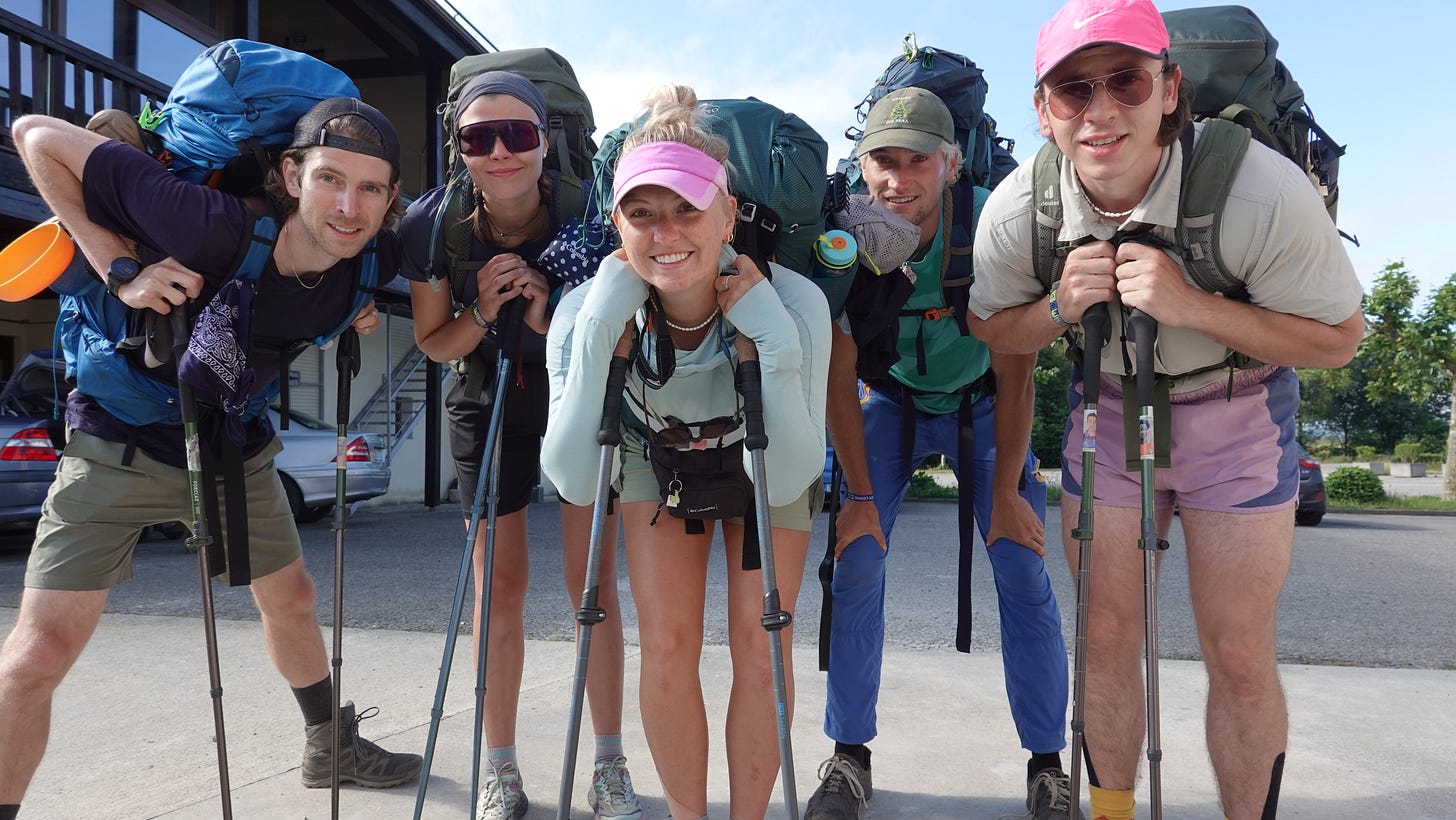On June 2, 2024, I flew to Spain by myself with zero expectations, having done minimal research, and primarily excited to spend some time outdoors. Little did I know it would become one of the best months of my life—hiking the Camino de Santiago.
The Camino de Santiago, with over 200 known routes, has been walked for thousands of years, originally as a religious pilgrimage—and for some, it still is. However, many, like myself, set out seeking adventure and discovering what the Camino provides. The route cuts through four autonomous communities (similar to states in the US): Basque Country, Cantabria, Asturias, and Galicia, where the final destination, the famous Cathedral de Santiago de Compostela, is located.
I first heard about the Camino de Santiago from one of my closest friends, who hiked it in the summer of 2023. After our yearly Thanksgiving hike, where she told me all about how incredible the experience was, I knew I wanted to tackle it. Beyond asking her which airport she flew into and which town she started in, I did minimal research—mostly just excited to spend time outdoors every day.
If I had to choose one word to describe my time on the Camino, it would be: Learning. Learning not only about how the Camino works (accommodation, food, etc.) but also learning more about myself than I could have imagined along the way.
I plan to write about my Camino adventures in upcoming posts (stay tuned), but for now, I’ll share what I learned about where I stayed, what I brought with me, what I ate, how I knew where to go, and more. This way, when future Camino posts come, they’ll make more sense!
To me, the Camino felt like one big summer camp scavenger hunt. You stay in bunk rooms every night with your friends, and then follow arrows throughout the day to stay on trail—it doesn’t get much more fun than that! That said, it was definitely a learning curve, especially in the first few days.
Who did I hike with: I set off to Spain with none other than me, myself, and I. I hoped to meet some people along the way but was fully prepared to walk the Camino alone if that’s what it came to. Luckily, just two miles into the first day, I met a girl close to my age who walked with me for the entire journey so I only ever spent one day fully alone. In the days that followed, we met tons of new people and “recruited” three guys to join our group. After that, we were inseparable—literally, we spent 24 hours a day together for almost a month.
Meeting friends on the Camino is so special because you get to know them in a way that would take years in “the real world.” The quality time we spent together, with no phone service and our only responsibility being walking from point A to point B every day, is something that’s hard to come by at home, where you might only see a friend for dinner once in a while.
When you walk together all day, stay in the same albergue, eat the same meals, and sleep in bunks next to one another every night, you have no choice but to get close. You also can’t help but dive into deeper conversations because the usual introductions (where you’re from, what you do) get covered on day one when you’ve got 17 miles ahead of you to talk.
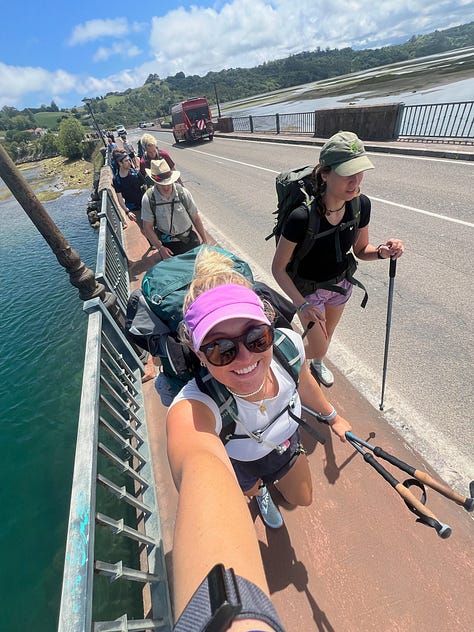
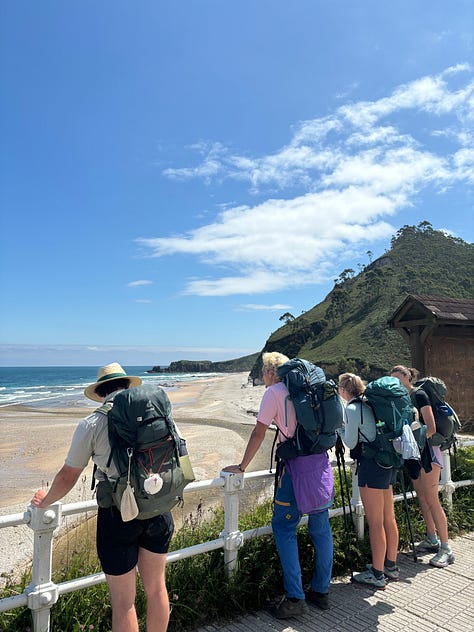
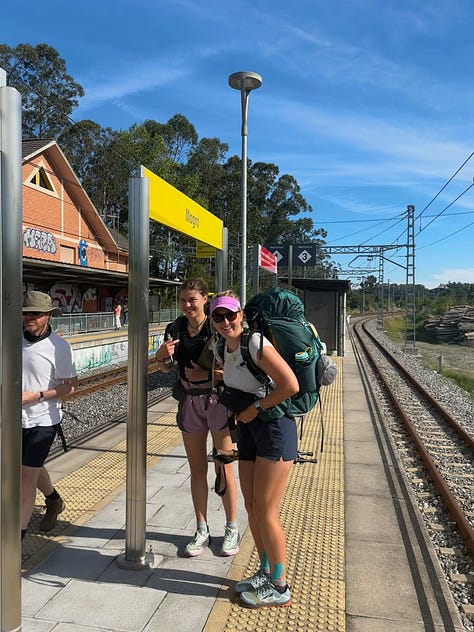
It’s something special to find five people from different countries and backgrounds who all decided to walk the Camino for their own reasons but came together to form such a tight-knit group. Each of us was not only learning about one another but also learning new things about ourselves through those deep conversations. That said, a lot of our days were also filled with inappropriate “would you rathers” and inside jokes.
The downside of meeting friends on the Camino is that it has to end, and when everyone lives internationally, getting the group together again isn’t as easy as it sounds. I cried so hard when we had to say goodbye (and anyone who knows me knows I’m usually about as emotional as a brick wall), but it just shows how special everyone was. Fingers crossed we can plan a reunion trip soon.
What did I bring? Too much. Packing was the only thing I really researched before embarking on my journey, and clearly, it didn’t help much because I ended up with way too much stuff. Everything I read said not to exceed 10% of your body weight, and while I never weighed my backpack, I definitely exceeded that. Granted, I did use everything I brought at least once, but not all of it was necessary. I had a 56L backpack, which was large by Camino standards, but I planned to use it as my primary travel bag for the rest of the summer, so it served me well.
For clothes, I brought: 2 hiking shirts, 1 long sleeve sun shirt, 1 fleece, 1 lightweight raincoat, 2 pairs of shorts, 1 pair of hiking pants, 1 pair of rain pants, 3 pairs of socks, underwear, 2 sports bras, 1 comfy tank top, 1 athletic skort, 1 athletic dress, 1 lined button-down top, a pair of pajamas, my hiking shoes, and 1 pair of sandals for showers/non-hiking shoes. Just typing that out makes me realize it was way too many items.
Handwashing is the name of the game on the Camino, and it’s a game I’m not great at. I quickly learned in the first few days that I don’t know how to properly hand wash clothes. So, when I found a washer on day three, every item I’d worn went straight in. After that, I mostly used washing machines, which were pretty common, and splitting the 3-4 euros with others made it manageable. There weren’t many dryers, but the weather was usually nice enough that line-drying worked. On the off chance my clothes weren’t dry by morning, I’d hang them from my backpack to finish drying as I walked.
Other items I brought included: sunglasses, a fanny pack, toiletries, a first aid kit, a Leatherman knife (thanks, Dad!), sunscreen, my Graston tool (a muscle scraper that came in very handy), a Nalgene water bottle, a 2.5L water bladder (which I used every day—controversial on the Camino, but I swear by it), reusable sandwich bags, 2 quick-dry towels, a small fold-up backpack (super useful for grocery runs), and a notebook.
Overall, I didn’t pack poorly—I just packed too much. If I were to do it again, I’d mostly change the clothes I brought since everything else was quite useful.
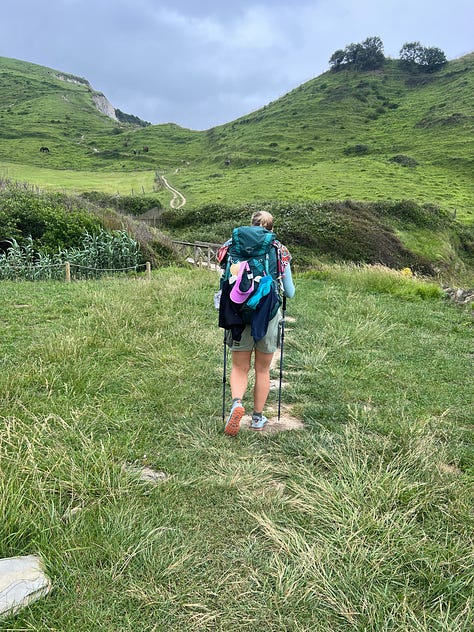
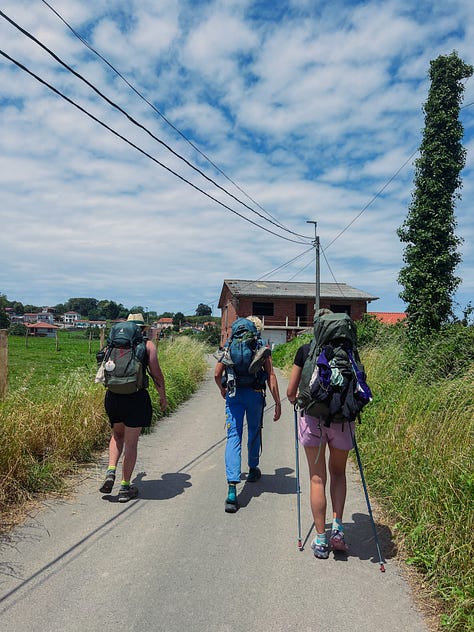
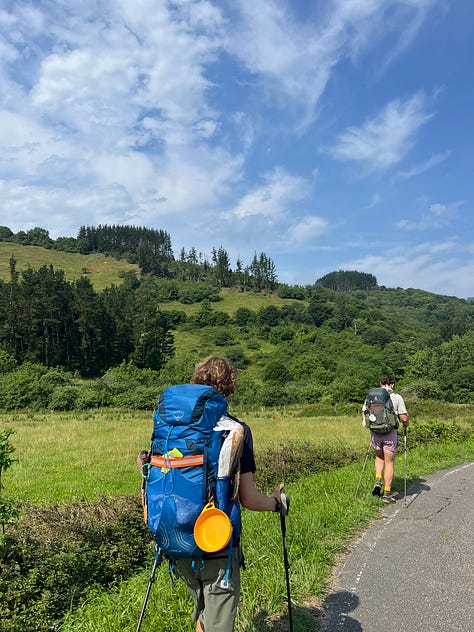
Route: I did so little research before starting the Camino that I didn’t even realize there were multiple routes. My friend had done the Camino del Norte (the Northern Route), so that’s what I planned to do. Although I started on the Camino del Norte, after meeting my friends, we ended up switching halfway through, hiking inland and making our way onto the Camino Primitivo, the original route with some supposedly tough mountain terrain. It wasn’t as bad as we expected. We followed the Primitivo until the last two days, where all the routes merge with the Camino Francés (the most popular route) for the final 50 miles or so into Santiago.
The holy grail of Camino planning is the Buen Camino app—an absolute godsend. You can plan your daily stages with details like distance, elevation, and how much road vs. nature walking there is. It also gives information on accommodations, grocery stores, restaurants, and more in each town you pass through. Plus, it has a map feature to track your location, so if you ever get a bit ~lost~ you can just open Buen Camino and get back on track.



I saw a handful of people carrying guidebooks for their Camino route, but for me, the Buen Camino app was perfect, and I wouldn’t want the extra weight of a book in my pack.
One of my favorite parts of the Camino is the scavenger hunt aspect. Whether you’re walking through forests, towns, or spotting arrows painted on private trash cans, the entire Camino is marked with yellow arrows. You’re always on the lookout for the next one to point you in the right direction. Sometimes, we had to go off-route to find an albergue for the night, and Buen Camino was a great tool for that. But throughout the day, we mostly just followed the arrows, knowing we’d end up where we needed to be.
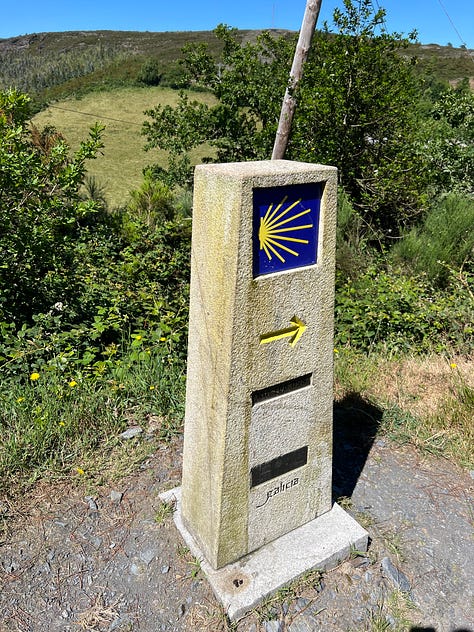
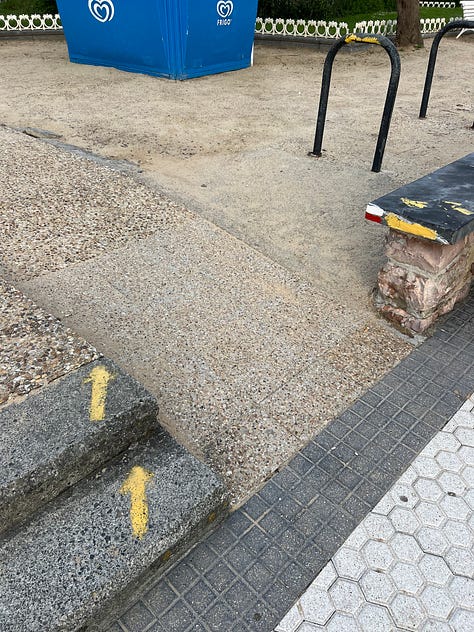

Accommodation: Along the entire Camino, there are pilgrim-specific hostels called albergues. Some are donation-based, while others have a set price, typically between 10-20 euros per night, depending on whether they offer breakfast and/or dinner or whether they are public or private. Public albergues are typically less expensive/donation based with bare bones while private albergues may be a bit more expensive but will provide real sheets and blankets and nicer amenities. They can also range in size from 16 beds to 100 beds, it all depends,
Some albergues allow you to reserve a bed ahead of time, while others are part of "the bed chase"—first come, first serve. Thanks to the Buen Camino app, we usually had a good idea of where we’d end up each night, and most mornings, we’d message an albergue to ask if they had five beds available for our group.
While they’re not the most glamorous—picture plastic mattresses (again, think summer camp) and paper sheets—albergues are one of the best parts of the Camino experience. My friends and I would typically walk together during the day, but each night it was fun to catch up with other pilgrims we’d met along the way and maybe hadn’t seen for a few days.
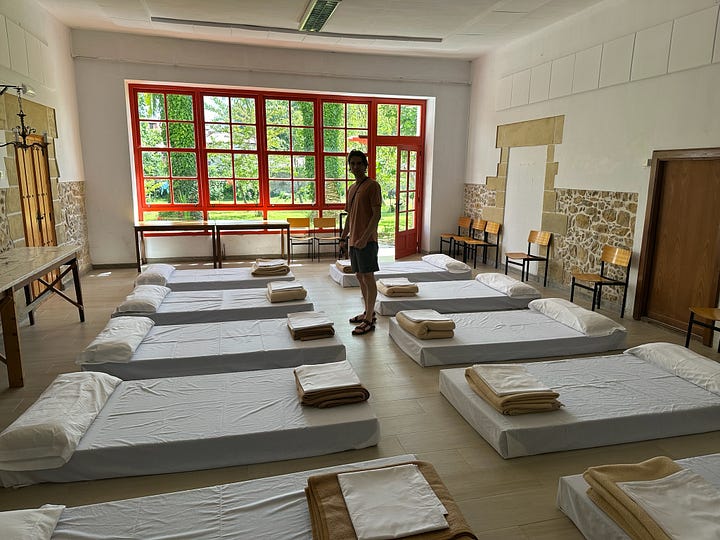
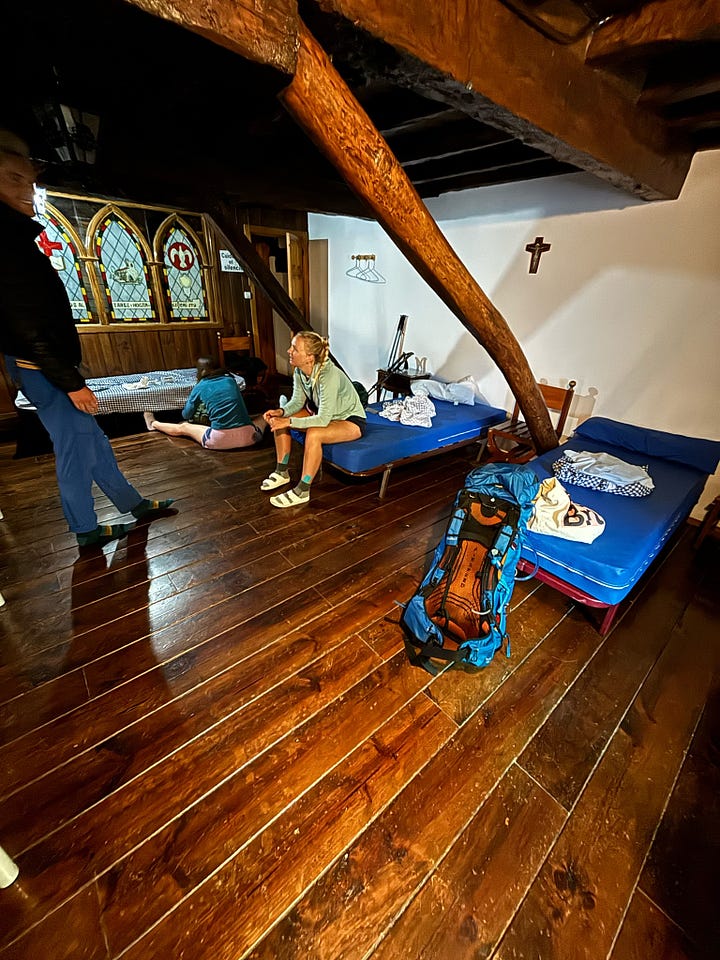
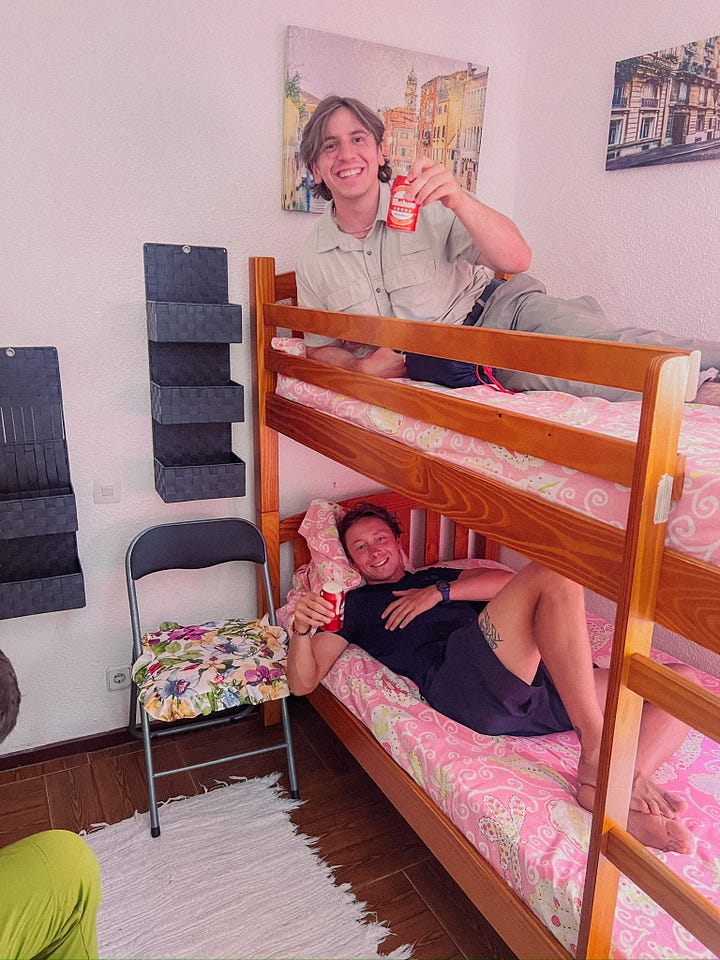
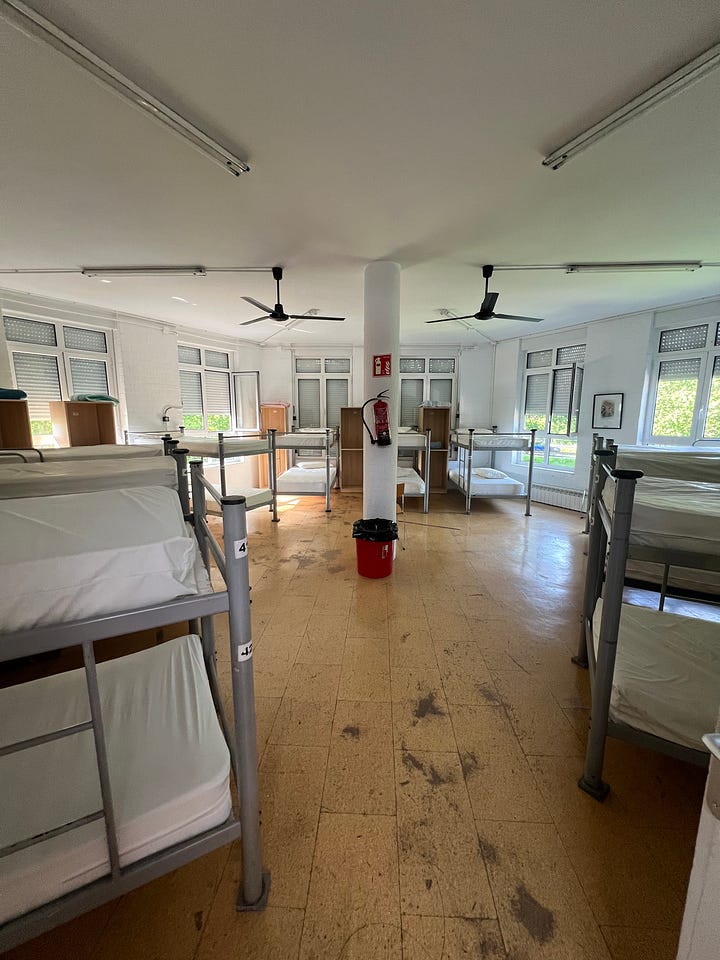
A few nights, especially in towns with limited albergue options, we rented apartments that slept 5-6 people. It was much easier to do when you’re traveling with a group, and it was so nice to have access to a free washing machine and a big kitchen where we could cook meals together.
The fun part about albergues is the collection of sellos (stamps) in your pilgrim passport. This is a document you carry around to identify yourself as a pilgrim and collect 1-2 stamps per day to prove you walked the Camino to receive your compostela (certificate of completion) once you reach Santiago.
Food: Unlike a typical backpacking trip through the wilderness, the Camino passes through civilization most of the time, meaning I didn’t have to pack days' worth of food. Snacks were always on deck in my backpack, but breakfast, lunch, and dinner didn’t need to be planned far in advance.
Breakfast was usually something small served by the Albergue, or if there was a kitchen, we’d make bowls of oatmeal, scrambled eggs, and lots of fruit. Lunch was typically a Spanish tortilla (a potato and egg dish) or a bocadillo (sandwich) from a local restaurant, or we’d stop at a grocery store for some sliced meat, cheese, bread, and other things to split along the way. Dinners were either provided by the Albergue, cooked by us in an Albergue or apartment kitchen, or eaten out—preferably at a spot with a Pilgrim Menu.
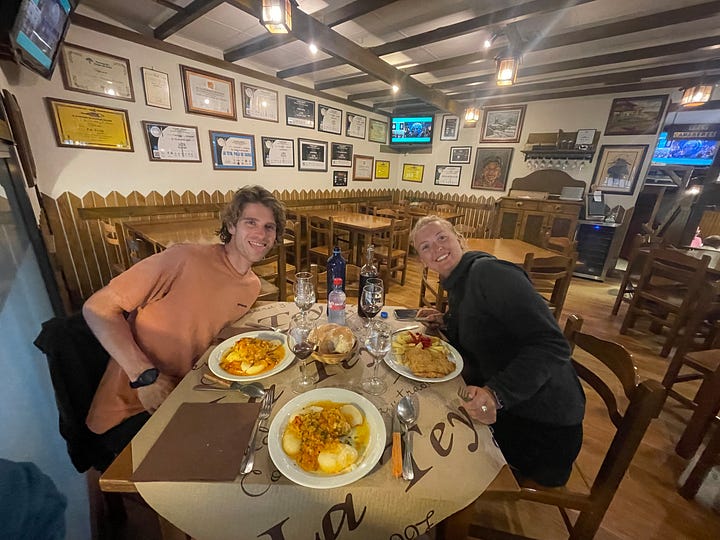
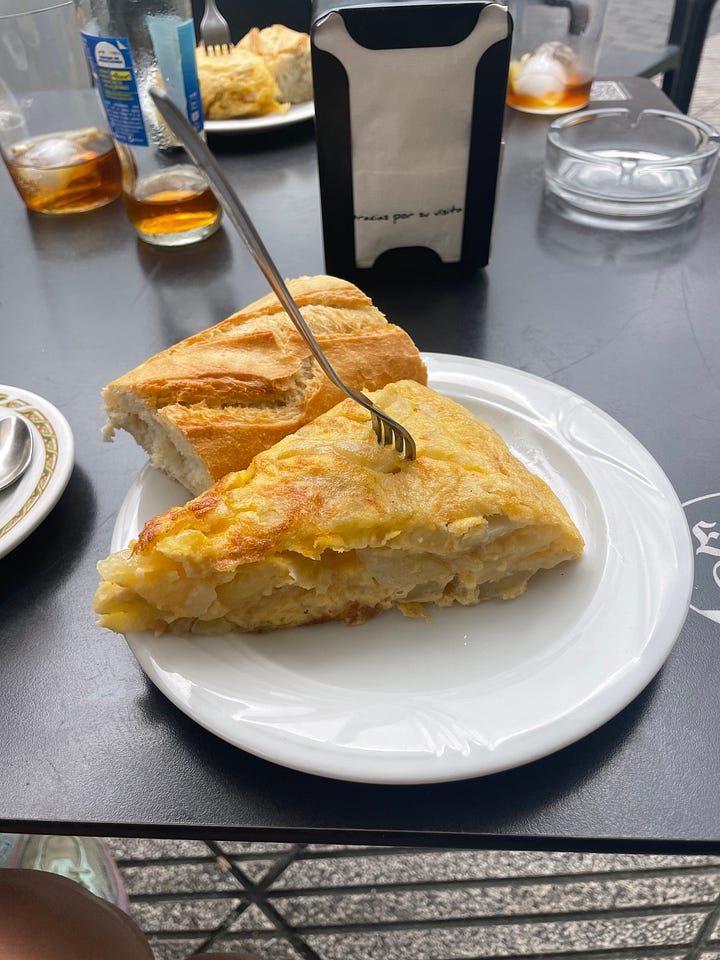
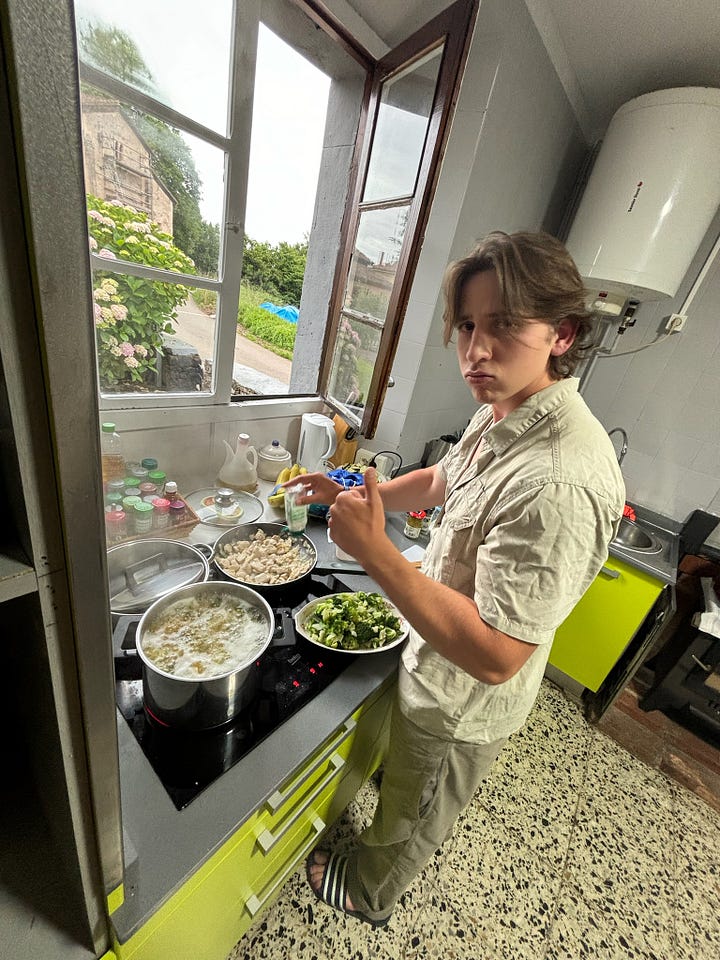
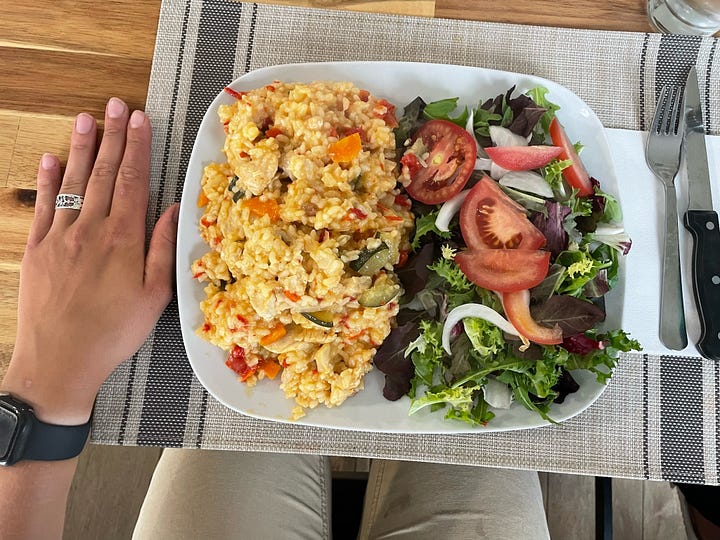
The Pilgrim Menu is a four-course meal that includes a hearty appetizers and mains, bottles of wine, and dessert, all for around 12 euros per person. It’s the absolute best when you’re starving after a long day of walking. If we didn’t have a Pilgrim Menu, we made up for it with daily ice cream, which became a non-negotiable treat.
Things to note: The Spanish siesta is real, and most restaurants close their kitchens around 3–4 pm and don’t reopen for dinner until 7–8 pm. So if you finish walking in the afternoon thinking you’ll get a big meal, think again! Also, grocery stores (and most things) are closed on Sundays, so plan ahead for snacks or meals. We learned that the hard way on our first Sunday.
Things to note, pt. 2: There is canned tuna everywhere on the Camino. If you love canned tuna, congrats. If you’re like me and can’t stand the smell, well... good luck.
The Camino de Santiago was an incredibly fun, challenging, and overall just amazing adventure. I can’t wait to share more details but for now thanks for reading a postcard from… The Camino de Santiago!




